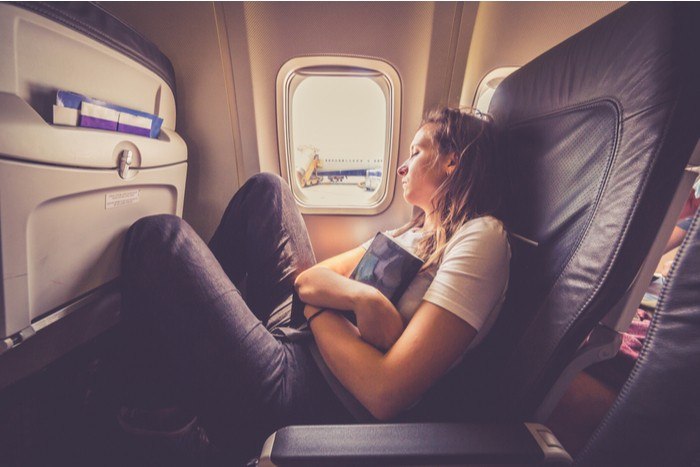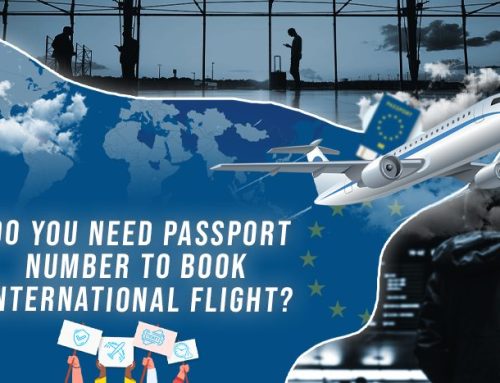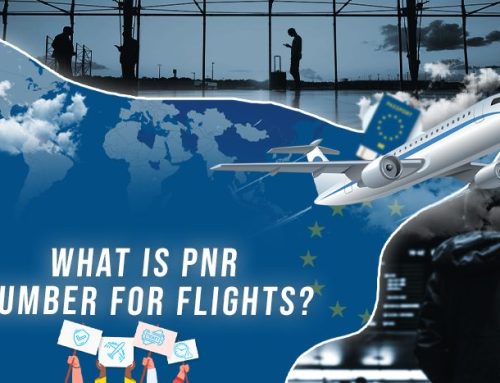One of the banes of any traveler’s existence is sleeping on a long-haul flight. Planes are made to transport as many people as they safely can a long distance. The more people they transport across the world, the more money they make. However, this requires airlines to sacrifice space which can make sleeping on an airplane nearly impossible for some people.
You have a 10-hour flight ahead of you and you know that you need to catch some shut-eye to avoid jet lag and make the flight itself pass by quicker. But how do you catch that much-needed sleep? From crying babies and annoying passengers to rough turbulence and glaring sunlight – it seems as though the odds are stacked against you. But, here are a few tips that could help you finally fall asleep on your flight.
Key Takeaways
- Preparation is key. To increase your chances of sleeping on a long-haul flight, cut back on caffeine, pack light, and choose a seat with plenty of space.
- Set up your space for comfort. Bring a neck pillow and blanket for support, noise-cancelling headphones to block out distractions, and recline your seat slightly for added comfort.
- Consider alternatives to sleeping medication. While medication might work for some people, it’s not a solution for everyone. Consider natural remedies like lavender oil or chamomile tea, or relaxation techniques like deep breathing or meditation.
Preparing For Your Flight
If you’re intending on sleeping on your long-haul flight, preparation is key. There are many things that you should do before you even leave for the airport that will help make sleeping easier. First of all, cut back on caffeine. It can be tempting – especially with an early morning flight – to grab a cup of coffee on your way to the airport. However, one cup of caffeine could go a long way in keeping you up for the day. Skip that cup of coffee and ease your body into sleep later on.
Next, make sure that you don’t overdo it with the carry-ons. There’s a limited amount of space in the above-head bins and much of what you bring could end up by your feet making it harder to stretch out. There’s already a limited amount of legroom – piling up bags that you brought with you could make it even more difficult to stretch out and get comfortable.
Finally, you might want to pick your seat carefully. Some airlines offer reserved seating whereas others allow for a first-come-first-serve. If you have the ability to choose your seat, pick one with plenty of space and room to stretch out. The center seat should be avoided at all costs!
Setting Up Your Station

Now that you’re on the plane, it’s time to make the most of your space. Set up your immediate area in a way that allows you to remain comfortable throughout the flight. Bring a neck pillow to support your head as there isn’t much else that allows you to comfortably rest it. If you have a window seat, you can rely on the wall for support, but even that is limited. Bring a neck pillow and a blanket if there isn’t one supplied by the airline.
Make sure to bring along some noise-cancelling headphones or other music listening devices. Without these, you could be subject to any crying babies, loud talkers, or someone else’s entertainment. With noise-cancelling headphones, the world around you is drowned out and you’re left with nothing but your own music that can help soothe you to sleep.
Relining your seat is a fantastic way to relax and provide yourself with more room. However, we’ve all been that person behind someone who reclines too far and cuts into our own space. Don’t overdo it with the reclining, just enough to get yourself comfy.
Take Some Sleep Aids
If all else fails, don’t be afraid to bring along some sleeping medication. Some people bring drowsy medication that is designed to knock them out, others rely on alcoholic drinks to ease their nerves. Whatever your body needs to quickly fall asleep, bring it along just in case the other methods don’t work out.
Frequently Asked Questions
-
How can I prepare for a long-haul flight to make sleeping easier?
Cut back on caffeine, pack light, and choose a seat with plenty of space to increase your chances of sleeping on a long-haul flight.
-
What should I bring on the flight to make sleeping more comfortable?
Bring a neck pillow and blanket for support, noise-canceling headphones to block out distractions, and consider reclining your seat slightly for added comfort.
-
Should I rely on medication to help me sleep on a long-haul flight?
While medication might work for some people, it’s not a solution for everyone. Consider natural remedies like lavender oil or chamomile tea, or relaxation techniques like deep breathing or meditation.
-
What if I can’t fall asleep on the flight?
Don’t stress too much – it’s not always possible to sleep on a long-haul flight. Try to relax, listen to some calming music or a podcast, and use the time to catch up on reading or watching movies.







